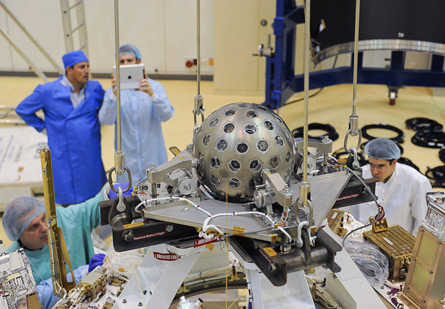To avoid the prospect of losing a high-value commercial payload on a risky maiden flight, Vega's first mission - VV01 - will carry a basket of scientific spacecraft, including nine so-called "cubesats", the 1kg 10cmx10cm boxes that are increasingly popular with low-budget researches thankful for any lift to orbit.
But while loss of the main payload would also not be a financial disaster, science would be far, far poorer if Vega fails to deliver the Italian space agency's LARES, or Laser Relativity Satellite, which will study the so-called frame dragging prediction of Einstein's theory of general relativity. This asserts that the rotation of a massive object such as the Earth will impose a drag on a smaller object passing nearby.
 |
|---|
© ESA |
The experiment involves gathering three or four years of precision data on the spacecraft's trajectory, measured by laser beams fired from a series of ground stations.
The spacecraft is remarkable. A simple, passive sphere just 36cm (14in) in diameter but with a mass of nearly 500kg (1,100lb) and covered with mirrors that reflect light directly back to its source, LARES will, says ASI chief scientist Enrico Flamini, be the densest object in the Solar System.
As strange as it was to design for mass rather than lightness, Flamini says this density and smooth shape are critical when measuring LARES's path through Earth's distortion of local space-time. Solar wind, and even photons, would buffet a normal spacecraft enough to cause it to wobble.
Source: Flight International



















